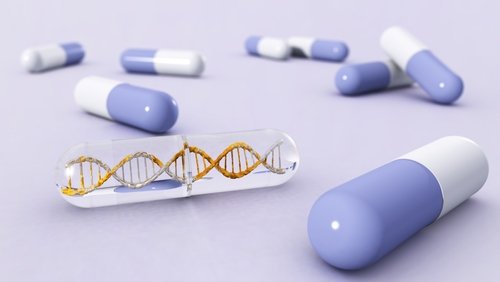Potential Gene Therapy May Improve Survival in MNGIE Patients, Mouse Study Suggests

A gene therapy designed to correct the underlying defect that causes mitochondrial neurogastrointestinal encephalomyopathy (MNGIE) could potentially improve survival in patients with the disease, a mouse study suggests.
The potential therapeutic strategy was described in the study, “Long-Term Sustained Effect of Liver-Targeted Adeno-Associated Virus Gene Therapy for Mitochondrial Neurogastrointestinal Encephalomyopathy,” published in the journal Human Gene Therapy.
MNGIE is a rare disease caused by genetic mutations of the nuclear TYMP gene, which encodes the thymidine phosphorylase (TP) enzyme. Low or no TP activity causes cells to accumulate high levels of thymidine and deoxyuridine molecules, which affects the synthesis of mitochondrial DNA, leading to mitochondrial dysfunction.
Patients with this genetic disorder often first show symptoms during childhood. Abnormal activity of the gastrointestinal organs, progressive paralysis of the muscles around the eyes, and damage of peripheral nerve cells are some common progressive symptoms that may become fatal.
MNGIE treatment strategies so far have been based on hematopoietic stem cell transplant and liver transplants. These have been shown to effectively reduce the levels of thymidine and deoxyuridine, since both hematopoietic cells and liver tissue increase TP activity. However, these options are invasive, and are associated with potentially severe risks.
As a possible treatment alternative, a research team presented a potential TYMP gene therapy strategy for MNGIE.
Led by researchers at Universitat Autònoma de Barcelona in Spain, the team used viral DNA to deliver the human TYMP gene to mice that had MNGIE.
First, they tried to transplant hematopoietic cells genetically engineered to produce the human TYMP gene. This strategy corrected the biochemical imbalance seen in the thymidine and deoxyuridine metabolites due to the disease, but survival rate in the mice did not improve, mainly due to limitations in the transplant method.
To overcome this poor outcome, they tested a new strategy, using viral DNA that targeted the liver to deliver the human TYMP gene directly to that organ. Administration of low amounts of viral DNA reduced thymidine and deoxyuridine levels to normal levels in about 50% of treated mice. Increased amounts of viral DNA had a long-lasting effect, increasing the activity levels of TP in almost all animals for up to 21 months.
No significant toxicity was found with the treatment, and no damage to major organs was detected in treated mice.
Overall, this “study provides further evidence that gene therapy using an AAV [viral DNA vector] targeting the liver is a feasible therapeutic option for MNGIE treatment,” the researchers said.
Additional studies are needed to further validate this therapeutic option, and to add new knowledge on optimal viral DNA delivery vectors to be used in humans.
“More detailed and expanded studies will be needed to ensure the safety of the treatment,” the researchers said. Still, this study provides useful data to inform others on possible starting basis for “designing and implementing future clinical trials with MNGIE patients,” the study concluded.






